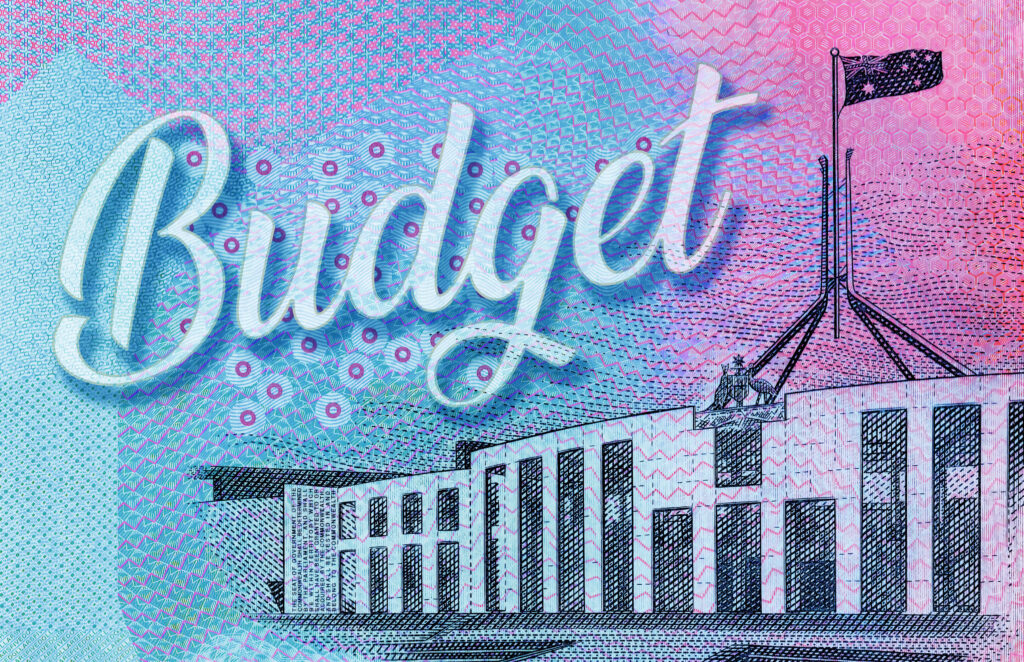Expectations of interest rate cuts later this year in Australia and the United States fuelled activity in the markets last month. The S&P/ASX 200 ended March on another all-time high. Mining shares are driving the market with gold, iron ore and lithium all rebounding. In particular, gold’s rise and rise saw it close at its highest ever US$2,230 an ounce as investors seek a safe haven from geopolitical tensions and interest rate falls.
In the US, the month was slightly less active for markets but since the beginning of the year, the S&P500 has put on just over 10%, the Nasdaq more than 9% and the Dow 5.6%.
The Australian dollar continues to fall with the just released CPI figures for February unchanged from the previous two months at 3.4%. Meanwhile the US dollar is strengthening.
Amid the mixed bag of economic indicators, household wealth has risen for the fifth straight quarter, up by 2.8%. That’s largely due to house price increases but share market growth has also played a part.
Retail turnover rose 0.3% in February thanks to the Taylor Swift phenomenon with her sell-out concerts in Sydney and Melbourne boosting spending. Taking Swift out of the equation, spending has stagnated after the excitement of the Christmas sales.

Market movements and review video – April 2024
Stay up to date with what’s happened in markets and the Australian economy over the past month.
Expectations of interest rate cuts later this year in Australia and the United States fuelled activity in the markets last month.
Australian shares reached a new record high at the end of the month, driven by mining shares with gold, iron ore and lithium all rebounding.
US markets also reached new highs during March, leaving the benchmark index up more than 10 percent so far in 2024.
Click the video below to view our update.
Please get in touch if you’d like assistance with your personal financial situation.

New increased super contribution caps
As the end of financial year gets closer, some investors are thinking about the most effective ways to boost their super balance, particularly with an increase in the caps on contributions from 1 July.
The concessional contributions cap, which is the maximum in before-tax contributions you can add to your super each year without paying extra tax, is increasing to $30,000 from $27,500 in the new financial year.i
The cap increases in line with average weekly ordinary earnings (AWOTE).
It is also useful to be aware of payment and reporting timelines. For example, your employer can make super guarantee contributions up until 28 July for the final quarter of the financial year and salary sacrifice contributions up until 30 June.
Any amounts showing on the ATO website for your account are based on when your fund reports to the ATO.
Carry forward unused amounts
If you haven’t made extra contributions in past years, you may have unused concessional cap amounts.
These can be carried forward, allowing you to contribute more as long as your super balance is less than $500,000 at 30 June of the previous financial year.
You can carry forward up to five years of concessional contributions cap amounts.
Getting close to exceeding the cap?
If you’re worried about going over the cap, you may wish to stop any further voluntary contributions based on an assessment of the extra tax you will pay.
For those with two or more employers, you may opt out of receiving the super guarantee from one of the employers.
Meanwhile, if special circumstances have caused you to exceed your cap, it’s possible to apply to the ATO for some or all of the contributions to be disregarded or allocated to the next financial year.
But, if all else fails and you have exceeded the cap, the excess contributions will be included in your assessable income and taxed at your marginal rate less a 15 per cent tax offset. The good news is that you can withdraw up to 85 per cent of the excess contributions from your super fund to pay your tax bill. Any excess contributions left in the fund will be counted towards your non-concessional contributions cap.
Timing is everything
The upcoming Stage 3 tax cuts, which commence on 1 July 2024, may affect the value of your concessional contributions. For some, tax benefits may be greater if contributions are made before the tax cuts begin.
Please check with us about your circumstances to make sure you make the most effective move.
Non-concessional cap also increased
The non-concessional contributions cap is the maximum of after-tax contributions you can make to your super each year without paying extra tax.ii
The non-concessional cap is exactly four times the amount of the concessional cap so it increases from $110,000 to $120,000.
If you exceed the cap, you may be eligible to use the ‘bring forward rule’, which allows you to use caps from future years and possibly avoid paying extra tax. It means you can make contributions of up to two or three times the annual cap amount in the first year of the bring forward period. iii
If your total super balance is equal to or more than the general transfer balance cap ($1.9 million from 2023–24 and 2024-25) at the end of the previous financial year, your non-concessional contributions cap is zero for the current financial year.
We’d be happy to help with advice about how the changes in contribution caps might affect you and whether you are eligible for the bring forward rule.
i, ii Understanding concessional and non-concessional contributions | Australian Taxation Office (ato.gov.au)
iii Non-concessional contributions cap | Australian Taxation Office (ato.gov.au)

How will you use your super?
We spend decades watching our super balances grow but for those thinking about retirement in the next few years, it can be confusing to work out how best to use your super.
Here are some of the considerations for the popular options.
Easing into retirement
You can keep working and receive regular payments from your super when you have reached your super preservation age (55 to 60, depending on your date of birth) and are under 65.
Using a transition-to-retirement income stream allows you to reduce your working hours while maintaining your income. To take advantage of this option you must use a minimum 4 per cent and a maximum 10 per cent of your super account balance each financial year.
A transition-to-retirement strategy is not for everyone, and the rules are complex. It is important to get independent financial advice to make sure it works for you.
Pros
-
Allows you to ease into retirement by working less but receiving the same income, using the transition-to-retirement income stream to top up your salary.
-
If there is spare cash each week or month, you can make extra contributions to boost your super, perhaps by salary sacrifice if it suits you.
-
There are tax benefits. If you are above 60, the transition-to-retirement pension payments are tax-free (although the earnings in the fund will continue to be taxed).
Cons
-
For people between 55 to 59, the taxable portion of the transition-to-retirement pension payments is taxed at your marginal tax rate, however you will receive a 15 per cent tax offset.
-
Withdrawing money from super reduces the amount you have later for when you retire.
-
It may affect Centrelink entitlements
Taking a retirement pension
This is the most common type of retirement income stream. It provides a regular income once you retire and you can take as much as you like as long as you don’t exceed the lifetime limit, known as the transfer balance cap.
Pros
-
While there is a minimum amount you must withdraw each year, there is no maximum.
-
There is flexibility – you can receive pension payments weekly, fortnightly, monthly or even annually.
-
You can still choose to return to work and it won’t affect income stream you have already commenced.
Cons
-
The account-based pension may affect your Centrelink entitlements
-
There is a risk that the amount in your super to draw on might not last as long as you do
-
The amount you can use for your pension is limited by the transfer balance cap.
Withdrawing a lump sum
You can choose to take your super as a lump sum or a combination of pension and lump sum payments, once you have met the working and age rules.
Pros
-
Gives you a chance to pay off any debts to help relieve any financial pressures.
-
Allows you to make an investment outside super in a property, for example.
-
Pay little or no tax if you are 60 and older.
Cons
-
If you are using the lump sum to invest, you may pay more tax
-
Reducing your super balance now, means less for later
-
Receiving a lot of money at once may encourage you to spend more than is wise
Access to SMSF funds
There are a number of additional issues to consider for those with self-managed super funds (SMSFs). For example, you will need to carefully check your Trust Deed for any rules or restrictions for accessing your super and consider how your fund can meet pension requirements if it holds large assets that are not cash, such as a property. It essential to consult a financial planner to understand your circumstances.
The process of choosing the best approach for your retirement income can be daunting so let us walk you through the options and advise on the most appropriate strategies.




